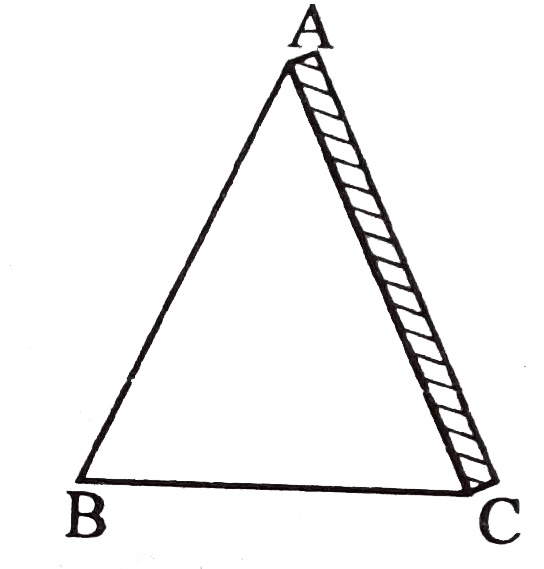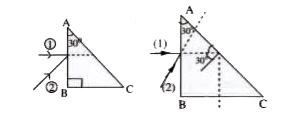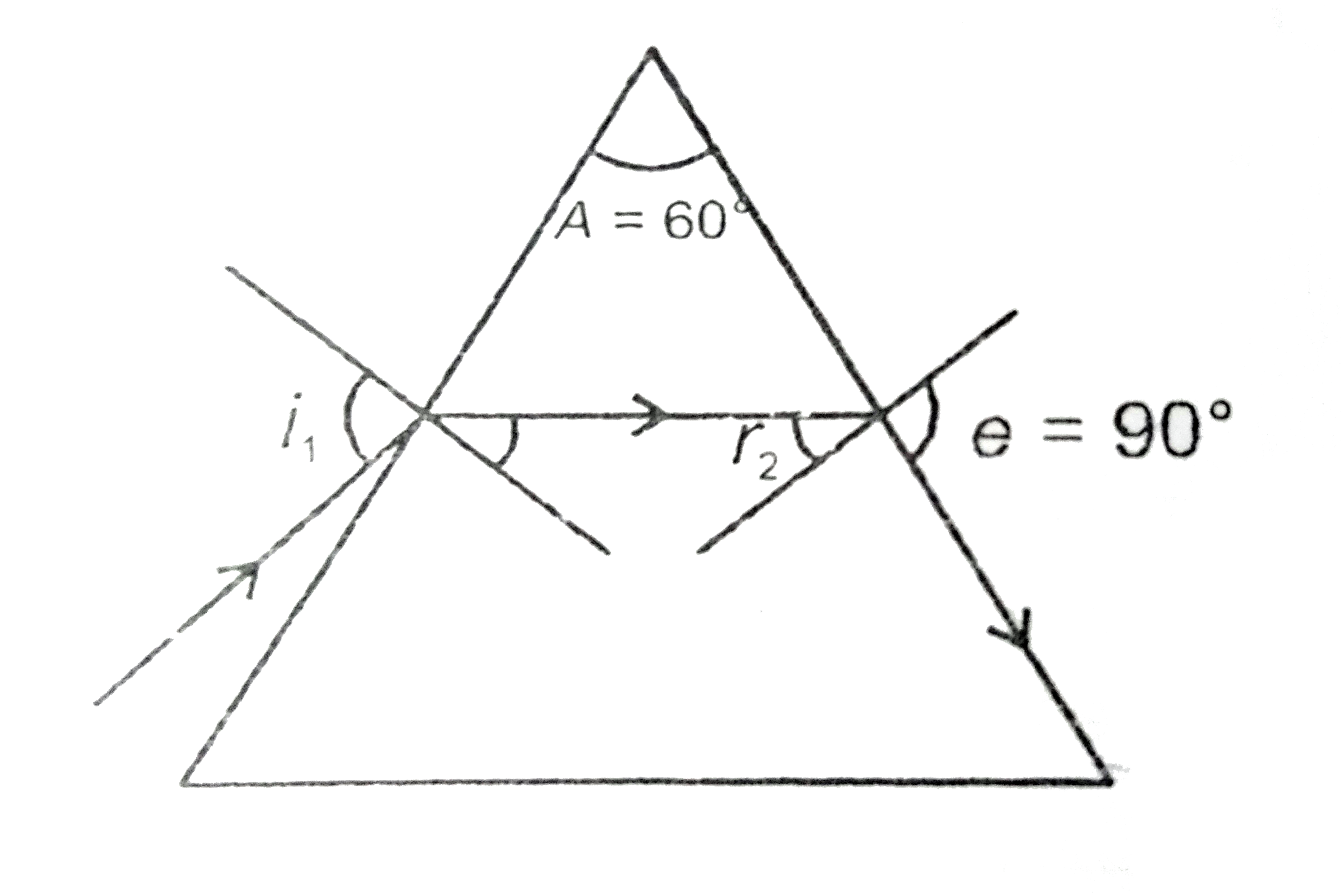A prism (μP=√3) has an angle of prism A=30∘.A thin film (μf=2.2) is coated on face AC as shown in the figure.Light of wavelength 550nm is incident on the face ABat60∘angle of incidence,find
(I)the angle of its emergence from the faceACand

(ii)the minimum thickness (in mn) of the film for which the emerging light is of maximum possible intensity.
a. Given, i1=60∘,A=30∘,μprism=√3
From Snell's law,
μ1sini1=1√3×sin60∘=1√3×√32=12s
r1=30∘
Also, r1+r2=A⇒r2=A−r1=30∘−30∘=0∘
That is, the ray is incident normally on face AC and angle of emergence i2=0∘
(b) For maximum intensity, the thickness of coated film must satisfy the condition of maxima in transmitted light, i.e.,
2μtcosr=(2n−1)λ/2
⇒t=(2n−1)λ4μcosr
For normal incidence, r=0. So, cosr=1 and for minimum thickness, n=1
∴tmin=λ4μ=6600Å4×2.2=750Å
 .
.
Topper's Solved these Questions
- WAVE OPTICSBOOK - CENGAGE PHYSICS ENGLISHCHAPTER - WAVE OPTICSEXERCISE - Exercise 2.1
12 Videos
- WAVE OPTICSBOOK - CENGAGE PHYSICS ENGLISHCHAPTER - WAVE OPTICSEXERCISE - Exercise 2.2
22 Videos
- WAVE OPTICSBOOK - CENGAGE PHYSICS ENGLISHCHAPTER - WAVE OPTICSEXERCISE - Comprehension Type
14 Videos
- SOURCES OF MAGNETIC FIELDBOOK - CENGAGE PHYSICS ENGLISHCHAPTER - SOURCES OF MAGNETIC FIELDEXERCISE - single correct Ansewer type
12 Videos
Similar Questions
Light ray is incident on a prism of angle A=60∘ are refractive index μ=√2. The angle of incidence which the emergent rays grazes the surface is given
View SolutionABC is right angled prism kept in air. A ray (1) is incident on the face AB along the normal. Another ray (2) is incident on the face AB such that it emerges normally form the face AC. Then

The minimum value of refractive index of the material of the prism for which the ray 1undergoes TIR on the face AC is
View SolutionLight falls at normal incidence on one face of a glass prism of refractive index 1.5, what will be the angle of emergence when the angle of the prism is (a) 30∘ (b) 50∘ ?
View SolutionA beam of monochromatic light is incident at i=50∘ on one face of an equilateral prism, the angle of emergence is 40∘, then the angle of minimum deviation is :
View SolutionA ray of light is incident on a 60∘ prism at the minimum deviation position. The angle of refraction at the first face (i.e. incident face) of the prism is-
View SolutionCalculate the angle of incidence on the face of a prism of refracting angle 60∘ and of refractive index 1.5, for which the emergent ray just grazes the other face.

View SolutionTwo light rays 1 and 2 are incident on two faces AB and AC on an isosceles prism as shown in the figure. The rays emerge from the side BC. Then,

View SolutionThe angle of a prism is 30∘. The rays incident at 60∘ on one refracting face suffer a deviation of 30∘. Then the angle of emergence is :
View SolutionThe angle of a prism is 30∘. The rays incident at 60∘ on one refracting face suffer a deviation of 30∘. Then the angle of emergence is :
View SolutionAn isosceles prism has one of the refracting surfaces silvered. A ray of light is incident normally on the refracting face AB. After two reflections, the ray emerges from the base of the prism perpendicular to it. Find the angle of the prism.
View Solution
